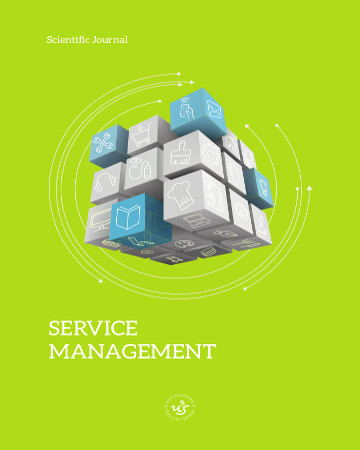
ISSN: 2450-8535
eISSN: 2353-2858
OAI
DOI: 10.18276/ejsm.2016.20-01


Lista wydań /
Vol. 20, 4/2016
The Banking Industry and Digital Innovation: in Search of New Business Models and Channels
| Autorzy: |
Stanisław
Flejterski
University of Szczecin Jakub Labun University of Oxford |
| Słowa kluczowe: | banking innovation digital revolution FinTech business models |
| Data publikacji całości: | 2016 |
| Liczba stron: | 11 (5-15) |
Abstrakt
The financial sector plays an essential role in the development of the contemporary economy, which is not likely to ever change due to its systemic nature. However, conventional banking is becoming a thing of the past as significant changes in demographic, societal, technological, economic, regulatory and legitimacy-related aspects of banking reality change the feasibility of present business models, pressuring for radical adjustments. Banks are also finding themselves under pressure from shadow banks, FinTech firms and lower-cost challenger banks as entries to the sector have risen. Non-bank financial institutions have different advantages over traditional banks due to different competencies and while they pose a threat of disruption, they also covet some of the resources that banks have access to. This article is an attempt to review and categorise the main trends affecting the environment of the financial industry basing on various empirical and non-empirical works of other authors, followed by a synthetic overview on how incumbents and entrants are innovating in a race to design a new valid business model. We aggregate those insights to assess the potential of disruption versus equilibrated cooperation using Disruptive Innovation Theory and Core Competencies theory and conclude that convergence between the two types of financial entities is likely, bringing an end to banking as we know it. We project that the business models will be evolving towards an opti-channel approach, whereby continued innovation enables the emerging alliances of banks and FinTech companies to reach the customer via their most preferred channel and offer a highly individualised service.
Pobierz plik
Plik artykułu
Bibliografia
| 1. | Berges,A.et al (2014).A new era in banking .The landscape after the Battle, Bibliomotion, Brookline. |
| 2. | Brett, K.(2010).Bank 2.0.Marshall Cavendish Business, Singapore. |
| 3. | Brett, K.(2013).Bank 3.0.Marshall Cavendish Business, Singapore. |
| 4. | Brynjolfsson, E., & Hitt, L. M. (2000). Beyond computation: Information technology, organizational transformation and business performance. The Journal of Economic Perspectives, |
| 5. | Christensen, C. (1997). The innovator’s dilemma. Harvard Business School Press, Boston. |
| 6. | Conner, K. R. (1991). A historical comparison of resource-based theory and five schools of thought within industrial organization economics: do we have a new theory of the firm?. Journal of management,. |
| 7. | Dobbin, F., & Jung, J. (2010). The misapplication of Mr. Michael Jensen: How agency theory brought down the economy and why it might again. Research in the Sociology of Organizations, |
| 8. | Folkman, P., Froud, J., Johal, S., & Williams, K. (2007). Working for themselves? Capital market intermediaries and present day capitalism.Business History |
| 9. | Haycock,J., Richmond,S.(2015).Bye bye banks? How retail banks are being displaced, diminished and disintermediated by startups-and what they can do to survive. Wunderkammer, London. |
| 10. | Heap, T.,Pollari,I.(2015).Fintech 100.Leading Global Fintech Innovators 2015.H2 Ventures & Financial Services KPMG |
| 11. | Gibbard, D. (2014) The Flaw in Omni-Channel Banking, Why Bi-Direction Channel Banking is Next. |
| 12. | The Economist, (2014) Banks? No Thanks! Oct, 11th 2014 issue |
| 13. | Pezzini, M. (2012) An Emerging Middle Class, OECD Observer |
| 14. | Rizzo, M. (2014) Empowering the Poor via New Technology, The World Bank |
| 15. | Schwarz, J., Baumgartner, C., Casale, G., Creyghton, A., Dany, O., Massi, M., Tang, Tjun., van den Berg, P., Halliday, K., (2015) Five Trends Disrupting the Corporate Banking landscape, BCG Perspectives. |
| 16. | Jackson,P.-ed(2016).Banking reform.SUERF Conference Proceedings,2. |
| 17. | Laube ,H.(2016).Rethinking banking.Credit Suisse Bulletin,1,42-50. |
| 18. | Markides, C. C., & Geroski, P. A. (2004). Fast second: How smart companies bypass radical innovation to enter and dominate new markets (Vol. 325). John Wiley & Sons. |
| 19. | Marous,J.(2015a).How banking can survive digital disruption? |
| 20. | Marous,J.(2015b).Top 10 retail banking trends and predictions for 2016 |
| 21. | Merton, R. C.. (1995). A Functional Perspective of Financial Intermediation. Financial Management, |
| 22. | O’Reilly, C. A., & Tushman, M. L. (2008). Ambidexterity as a dynamic capability: Resolving the innovator's dilemma. Research in organizational behavior, |
| 23. | Prahalad, C. K. and Hamel, Gary, The Core Competence of the Corporation (1990). Harvard Business Review, |
| 24. | Rizzo, M.(2014).Digital finance:empowering the poor via new technologies… |
| 25. | The disruption of banking(2015).The Economist Intelligence Unit Limited. |
| 26. | Tripsas, M. (2009). Technology, identity, and inertia through the lens of “The Digital Photography Company”. Organization Science, |
| 27. | Tushman, M. L., & Anderson, P. (1986). Technological discontinuities and organizational environments. Administrative science quarterly, |
| 28. | Yu, D., & Hang, C. C. (2010). A reflective review of disruptive innovation theory. International Journal of Management Reviews, |